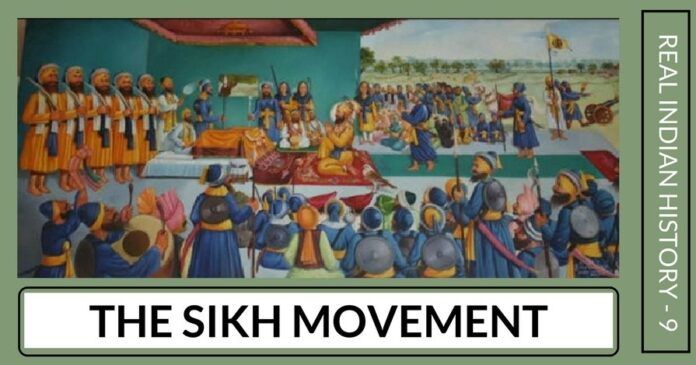
The Previous Parts of this series can be accessed here. Part 1, Part 2, Part 3, Part 4, Part 5, Part 6, Part 7, Part 8A and Part 8B. This is part 9.
THE SIKH MOVEMENT
Meanwhile, in the Punjab region, the Sikh (disciple) movement had been gaining strength over the years. The movement that had been started by Guru Nanak in the 15th century, had been kept alive by his successors.
The Sikh movement had been relatively non-political till the time of Guru Arjan Dev’s execution by the Mughal emperor Jehangir. The Sikh Gurus emphasized that the God of both the Hindus (Parabrahman) and the Mussalmans (Allah) was one and the same. The Sikh movement attracted mostly Hindus but it also attracted Muslims. This made the clerics in the court of Jehangir upset and asked him to execute Guru Arjan, who was the Sikh Guru at that point in time.
Jahangir related in his autobiographical work the (Tuzuk-i-Jahangiri) “In Govindwal…there was a Hindu named Arjun, in the garments of sainthood and sanctity, so much so that he had captured many of the simple-hearted of the Hindus, and even of the ignorant and foolish followers of Islam, by his ways and manners, and they had loudly sounded the drum of his holiness. They called him Guru, and from all sides, stupid people crowded to worship and manifest complete faith in him. For three or four generations they had kept this shop warm. Many times it occurred to me to put a stop to this vain affair or to bring him into the assembly of the people of Islam.”
The Sufi Shaikh Ahmad of Sirhind cheered the killing of the Guru writing, “The execution of the accursed kafir of Goindwal is an important achievement and is the cause of the great defeat of the accursed Hindus.” Sirhindi was utterly revolted that anyone could even have the audacity to call Ram and Rahim as the same entity. He also said referring to the Supreme Creator as Ram & Krishan was akin to calling a king a sweeper.
Sikhism had essentially been a non-violent movement till the killing of Guru Arjan Dev.
According to Sikh tradition, Guru Arjan Dev commanded his son Guru Hargobind to militarise and fight Mughal oppression. Guru Hargobind militarised the Sikhs after his release from imprisonment (He also ensured the release of fifty-two Hindu kings who had been imprisoned by Jahangir). Guru Hargobind mostly enjoyed good relations with the Mughals after this although when Shahjahan, who was far more orthodox than Jehangir ascended the throne, these relations soured again as Shahjahan had implemented several policies to subjugate the infidels.
A few decades later, however, came the turning point in Sikh history. Aurangzeb had become the emperor. Despite Aurangzeb having a Hindu grandmother and a Hindu great-grandmother, Aurangzeb was far more anti-Hindu than even his great-grandfather Akbar, who had no Hindu blood at all and was complete of Persian and Mongol ancestry. Akbar lost his initial religious zeal and became tolerant of Hinduism later on in his life. Aurangzeb, on the other hand, was extremely ashamed of the Hindu blood running through his veins. He was an Islamic puritan and enacted a lot of measures to destroy Hinduism.
Jadunath Sarkar wrote, “In Kashmir, Hindus and Muslims used to intermarry, and the wife, whatever might have been her father’s creed, was cremated or buried as her husband happened to be a Hindu or Islamite. But in October 1634, Shah Jahan forbade the custom and ordered that every Hindu who had taken a Muslim wife must either embrace Islam and be married anew to her, or he must give her up to be wedded to a Muslim. This order was rigorously enforced.”
The governor of Kashmir meanwhile had also enacted several anti-Hindu measures. It is believed that a group of Kashmiri Brahmins went to Anandpur Sahib to meet Guru Tegh Bahadur, who was addressed by them as ‘Hind ki Chaadar or the Champion of the Hindus’.
According the most accounts, Guru Tegh Bahadur, the ninth Sikh Guru challenged the persecution of Hindus from Kashmir and was summoned to Delhi under a pretext and then arrested by Aurangzeb. The Guru was locked up in a cage and was forced to watch his companions Bhai Mati Das, Bhai Sati Das and Bhai Dyala get tortured. The companions refused to embrace Islam despite the extreme pain and suffering that they had to go through and were all eventually killed. Eventually, Guru Tegh Bahadur was beheaded after he refused to embrace Islam.
Guru Tegh Bahadur’s great sacrifice was eulogized by his son and successor Guru Gobind in his autobiography – Bachitra Natak;
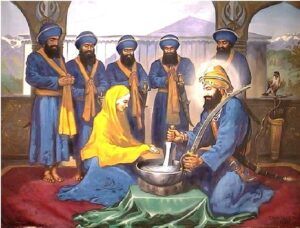
“He protected the tilak and sacred thread which marked a great event in Kali Yuga
For the sake of his saints, he laid down his head without even a sigh.
For the sake of his Dharma, he sacrificed himself. He laid down his head but not his creed.
The saints of the Lord abhor the performance of miracles and malpractices.
Breaking the potsherd of his body head of the king of Delhi, He left for the abode of the Lord.
None could perform such a feat as that of Tegh Bahadur.
The whole world bemoaned the departure of Tegh Bahadur.
While the world lamented, the gods hailed his arrival in heavens.”
Guru Gobind was just a boy when these horrible events unfolded. Sikhism had essentially been a non-violent movement till the killing of Guru Arjan Dev after which Guru Hargobind militarised the Sikhs with the help of Rao Mandan Rathore, a Rajput of the house of Marwar. However, Guru Gobind took the next step and changed the Sikh movement forever. Guru Gobind Singh began this revolution by composing the Dasam Granth, a text featuring the retelling of ancient Puranic tales with a focus on the Supreme Brahman (Kaal). He composed tales of Durga’s exploits against the demons (Rakshasas) to inculcate Bir Ras in his Sikhs and to inspire them to rise up against the Mughals.
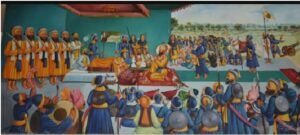
“I have taken the birth of this purpose, the saints should comprehend this in their minds.
(I have been born) to spread Dharma, and protect saints, and root out tyrants and evil-minded persons” wrote Guru Gobind in the Bachitra Natak.
Guru Gobind asked all his followers to congregate at Anandpur Sahib on the auspicious day of Vaishakhi in 1699. He nominated 5 disciples from various parts of India — Lahore, Hastinapur, Dwarka, Bidar and Puri to be the first members of his ‘Khalsa’. He told all male Sikhs to adopt the surname ‘Singh’ (Lion) while all female Sikhs were asked to adopt the surname ‘Kaur’ (Princess). Thus began the war of the Sikhs against the Mughals.
Banda Singh Bahadur was tortured to death on the orders of the Mughal emperor Farrukhsiyar.
Guru Gobind Singh fought several battles against the Mughals and their Rajput allies who ruled the hilly regions of Punjab. He lost all four of his sons in this war and then retired to Nanded in the Deccan in his final years where he met the Bairagi known as Madho Das at his ashram (originally known as Lachman Dev).
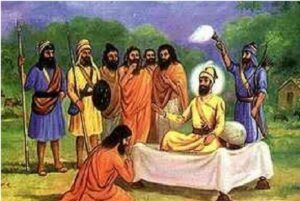
What completely transpired between the two is not clear but most scholars agree that Guru Gobind Singh convinced Madho Das to rise and fight for ‘Dharma’. Madho Das decided to become a warrior and took up the name ‘Banda’. He went to Punjab on Guru Gobind’s orders to fight Wazir Khan, the Nawab of Sirhind who was responsible for the brutal killing of the sons of the Guru. Banda Singh Bahadur killed Wazir Khan during their invasion of Sirhind, avenging the deaths of the sons of the Guru.
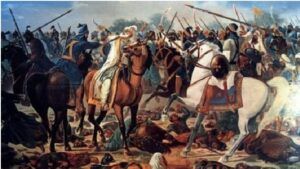
Banda Singh Bahadur was eventually captured along with his wife Susheel Kaur (daughter of the Rajput king of Chamba) and son. He was tortured to death on the orders of the Mughal emperor Farrukhsiyar and was even forced to eat the organs of his own son during the course of this torture.
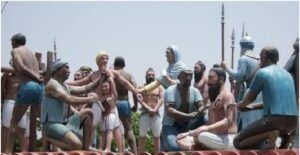
Despite this loss, the Sikhs continued their battle against the Mughals and managed to form several Misls in the areas that they annexed.
Many other anti-Mughal rebellions took place during the time of Aurangzeb:
- Durgadas Rathore freed the region of Marwar after a great struggle against the Mughals. Durgadas fought the Mughal army on the streets of Delhi with his small band of Rajputs and successfully took the prince and the widows of Jaswant Singh back to Jodhpur.
The phrase “Mayee ehra poot jan jehara Durgadas, baandh mundaso rakhiyo bin thambeaakash.” (Mother, give birth to a son just like Durgadas, who stopped the flooding dam of Moghuls without any support) became a saying in Rajasthan following his heroics.
Inspired by the advice of Shivaji,Chattrasal rebelled against the Mughals at the age of 22.
Cambridge History of India states, “He displayed a rare combination of the dash and reckless valor of a Rajput warrior with the tact, diplomatic cunning and organizing power of the best Mughal ministers. But for his twenty-five years of unflagging exertion and skillful contrivance, Ajit Singh could not have secured his father’s throne. Fighting against terrible odds, he kept the cause of his nation triumphant, without ever looking to his own gain.”
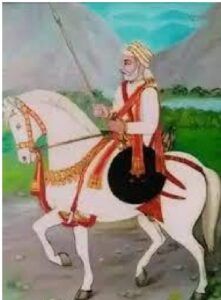
- Inspired by the advice of Shivaji, Chattrasal rebelled against the Mughals at the age of 22, with an army of 5 horsemen and 25 swordsmen and eventually managed to liberate Bundelkhand.
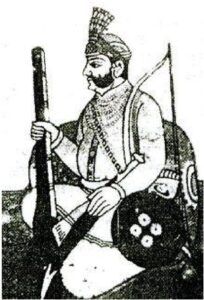
- During the Aurangzeb era itself, the great Lachit Borpukhan of Assam decimated the Mughals at the battle of Saraighat and checked Mughal expansion in the North East.
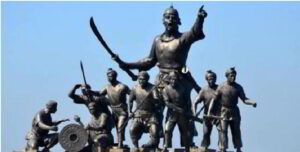
. . . to be continued
- Real Indian History – Part 14 - February 19, 2018
- Real Indian History – Part 13 - February 15, 2018
- Real Indian History – Part 12 - February 12, 2018











Kidney donor are needed A+, B+, O+, blood group donors between the age
of 17-65. We give you all the entire best attempt, we will give you
honest price for your donation & top best medical treatment it will
help your future life, , Call or Whats-app Dr.Andrew Dominic for more
details
Phone Number:+919205402152
Whats-app:+919205402152
Email: rasodym@gmail.com
Interesting but I know the name of wife of Banda singh Bahadur was Ratna nnot sushil kaur and like to confirm.